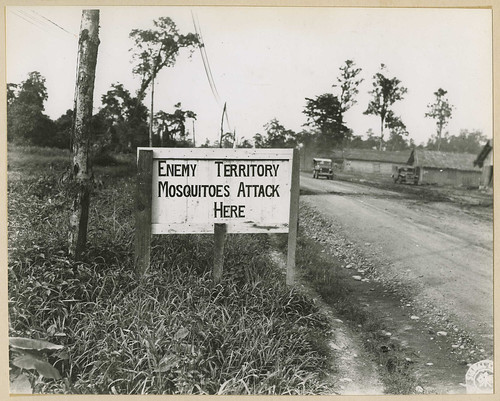Tomorrow is World Malaria Day, which fits right in with the theme of my climate change and health project, since I used malaria as an example of how vector-borne diseases may spread. Vector-borne diseases are infections that are transmitted to humans and other animals by blood-feeding insects, such as mosquitoes, ticks, and fleas (hence, vector=bug).
Malaria is the most deadly global vector-borne disease. It is a blood infection that is transmitted by female Anopheles mosquitoes. The mosquito transmits a parasite that infects the liver and spreads to red blood cells. Currently, 41% of the world's population live in areas where malaria is transmitted. Each year 350–500 million cases of malaria occur worldwide, and 1-3 million people die, 80% of them in sub-Saharan Africa.
The majority of malaria infections in the U.S. occur among travelers that bring the infection back from another country. The CDC reported 1,564 cases of malaria in the US in 2006. In many temperate areas, such as Western Europe and the US, economic development and public health measures have eliminated malaria. However, most of these areas have mosquitoes that can transmit malaria, and reintroduction of the disease is a risk.
Climate change and its effect on the spread of vector borne diseases is challenging to model. However, significant relationships have been documented between the El Niño Southern Oscillation and epidemic malaria in Asia and South America. El Niño is a cyclical weather event that lasts from 1.5-2 years and builds up warm surface water off the coast of South America, increasing air temperature and the chances of rain and floods.
El Niño could be an indicator for the effect of climate change on malaria incidence. The annual total number of malaria cases is strongly correlated with sea surface temperature changes in the eastern equatorial Pacific. One study showed that in Colombia, malaria cases increased 17.3% during a Niño year and by 35.1% in the post-Niño year. Though these changes are more sudden than what we can expect to occur from climate change, the health impact could still be severe.
Geographic distribution of malaria and the number of cases are expected to change as climate changes, like during El Niño years. This map presents a possible scenario for malaria in 2050 and shows regions that have endemic malaria now and regions where it may spread. In some areas where climate could decrease rainfall, the number of mosquitoes may decrease and so would malaria transmission rates.
Changes in malaria distribution on a global scale is still an area of active research. Despite the strong connection between malaria and climate, there is still uncertainty about future malaria transmission rates because there are many other factors that affect the disease’s spread, such as socioeconomic development, drug resistance, and immunity.
Tune in tomorrow for a special Saturday post for World Malaria Day.
This is Part 3 of 7 in our Climate Change and Health series.
Part 1 - Climate Change and Health
Part 2 - Heat-Related Issues
Part 3 - Malaria
Part 4 - Lyme Disease
Part 5 - Mental Health
Part 6 - Water-borne Disease
Part 7 - Extreme Weather Events


is very interesting to see how the weather can affect this disease so strong, thank you for sharing this information!
ReplyDeleteOf course! If there are any other diseases you'd be interested in hearing more about, please let us know!
ReplyDelete